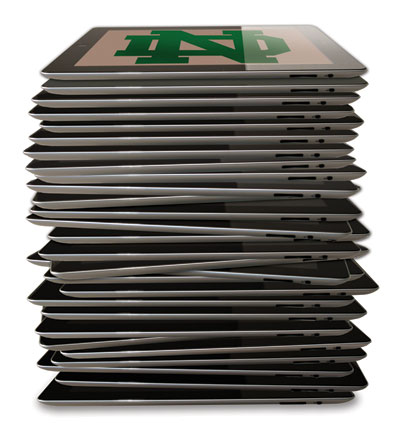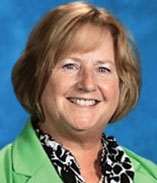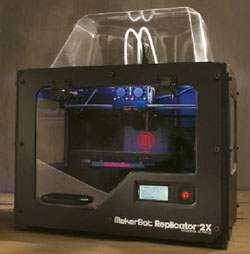In the next few years, beginning with the fall 2013 semester, NDPMA is undergoing dramatic technology changes, including the way students access textbooks.
 According to the Federal Communications Commission, educators and students in the U.S. spend more than $7 billion every year on K-12 textbooks. High school and college textbook prices have increased by over 800% since 1978, according to the American Enterprise Institute. Fortune Magazine recently reported that college students pay an average of $655 per year on books and supplies. And at the other end of the spectrum, some educators are looking at open-source, Internet-based textbooks that allow teachers to customize them by adding videos, charts and illustrations.
According to the Federal Communications Commission, educators and students in the U.S. spend more than $7 billion every year on K-12 textbooks. High school and college textbook prices have increased by over 800% since 1978, according to the American Enterprise Institute. Fortune Magazine recently reported that college students pay an average of $655 per year on books and supplies. And at the other end of the spectrum, some educators are looking at open-source, Internet-based textbooks that allow teachers to customize them by adding videos, charts and illustrations.
With that as a backdrop, on April 11, 2013, thousands of educational leaders from across the country and the world gathered near Washington, D.C., for the first “Future@NOW: Transition to Digital Classrooms” international conference. The event, hosted by Discovery Communications, a media company responsible for TV content that includes the Discovery Channel, TLC and Animal Planet, also was streamed live to more than 1,600 sites nationwide.
The overriding theme of the conference, whether it was official or not, was the headlong rush of schools and school systems into digital textbooks and learning.
U.S. Congressman George Miller (Calif.) attended the conference. He recently proposed legislation to speed technology innovation in schools in the U.S. “There is a new imperative of digital learning in this country,” he said. “The classroom has already evolved in such amazing ways and must continue to do so for us to compete on the world stage.”
Notre Dame Preparatory School and Marist Academy is embracing this evolution and moving forward with a technology plan that will soon make digital devices in the classroom as ubiquitous as desks.
NDPMA registrar and academic technology coordinator Joanne
Widmaier says the digital world will be a big part of Notre Dame’s academic offerings.
Teachers in the lower division spent a lot of time preparing for the digital change. A number of them attended a MACUL (Michigan Association for Computer Users in Learning) conference on using technology in the classroom, and one of them attended the “iPad in the Elementary School” workshop this summer at Harvard University. Widmaier says the other teachers have been receiving regular updates from these conferences and workshops and will continue to do so.
“There was a professional development workshop for the entire lower division staff this August as well,” she said.
One class at the lower division didn't wait for August, however. Donna Stuk’s first grade class was “swiping away” on iPads last school year, according to Widmaier. “They love the iPad math apps, the reading, drawing and interaction with their teacher,” said Widmaier. “Mrs. Stuk has definitely seen an increase of student engagement when using iPads in the classroom. In fact, the most popular educational apps for iPads today are for geared for students ages 3-11. These kids were born digital learners!”
“ETT, phone home”
Going forward, the plans for the middle and upper divisions may go in a different direction than iPads, Widmaier said. Notre Dame’s Educational Technology Team (ETT), a group of teachers and staff charged with bringing the school into the digital world, has been comparing tablet devices and currently are leaning toward a Windows 8-based hybrid tablet/PC.
“A tablet/PC is a kind of mobile computer with a touchscreen and a pen-enabled interface that runs on a desktop operating system,” Widmaier said. “The screen detaches from the dock (keyboard) and becomes a fully operational tablet. The team brought in several devices to evaluate and compare for ease of use, collaboration, operating systems, battery life, size/weight, student/teacher work flow, mobile device management, available applications, benefits to the students, cost and how the device enhances and supports curriculum and academic achievement.”
Teachers in the pilot program will receive the device in August while students and all other teachers will receive devices in January. Sometime during the 2013-14 school year, a teacher workshop will be held at NDPMA for all divisions, and a “boot camp” for students is planned so they can receive their devices, load apps and learn device skills and digital citizenship.
Why 1:1?
Many advantages have been cited for going all-out digital in today’s schools. For Notre Dame with its IB programs, going global and going there quickly just makes sense for a “world school,” officials say. Among other reasons for going to 1:1 tablets are:
• It allows learning anywhere, anytime, with many more resources than students can possibly carry in a backpack
• Interactive simulations and illustrations that can produce a much greater depth of understanding of a concept
• New media: students can use PowerPoint and Prezi, record their own words, use photography, make a video, create a website and blog to get their points across
• Collaboration: a vital skill in a digital world is the ability to work collaboratively on projects with others who may be in the next classroom or in a different hemisphere
• Attentive students: studies show student engagement increased when using tech tools and that achievement levels are greatly improved
• Productivity: allows for a unique academic profile, creating a virtual three-ring binder that is omnipresent, all work in one place—great study tool for final exams
Widmaier says that as professional development is key to the program’s success, the school plans to designate certain teachers who have previously embraced technology in the classroom as educational technologists. “The educational technologists will then help develop and implement technology to enhance learning while working with teachers to help make them more comfortable with the tools and to track individual and group assessments,” she said. “We will then evaluate impact as well as survey teachers, students and parents during our first 1:1 year.”
Currently, there are few students who bring their own tablets to school. But Widmaier says that they do not have access to the school’s wireless infrastructure at this time. “Our plan ultimately is to have one device for every teacher and every student and wireless for all. But the network will only be available to a school-issued computer or tablet.”
Social media
It might come as a surprise, but Widmaier says it is possible that social media—Twitter, for example—will be open and available to students. “While NDPMA will have definite restrictions in place to protect students, certain social media sites will definitely be open and used in the classroom,” she said. “We believe social media and existing school user policies can coexist. Part of our mission statement says that we form moral and upright citizens. That includes digital citizens as well.” She stresses the fact that definitely the school will be in full compliance with COPPA, the Children’s Online Privacy Protection Act, which was enacted as a federal law in 1998.
Widmaier says Twitter has become a highly productive source for information—a tool for both students and teachers as well as for professional development. “The number one hashtag in all of the Twitter universe is ‘#education,’” Widmaier notes. “And teachers can have their students follow Pope Francis or President Obama for a week and write a report, create a timeline, embed videos or photos of achievements, etc.—the possibilities are endless!” School officials stress, though, that NDPMA will continue to actively filter the web and secure all devices that use its wireless Internet system.
Digital media center
Major changes are already afoot in the school’s media center when it comes to the digital world. Currently, the media center is donating, purging and has begun the process of removing many volumes of print material from its library. Marna Nemon, Notre Dame’s media specialist, recently turned faculty and staff on to the many e-resources readily available today, including the Michigan Electronic Library, Credo Reference, a new Gale Reference eBook collection and other online reference books, all in full text.
As for classroom textbooks, the school is moving toward ePubs and Digits, and teachers could also use iBook Author to create their own books. School administrators say they will ensure that all digital classroom media follows State of Michigan guidelines as well as International Baccalaureate requirements for each subject area.
Widmaier notes that the 2013-14 academic year will be a transition year for hard copies to digital books. “In some instances there will be hard copies in classroom and digital copies for computer use,” she said. “But it will become obvious for most that the digital copies will be much easier to navigate. Students will be able to log into the books from any device, whether it’s a desktop, laptop, tablet or even a smartphone. It really is a whole new world!”
A 3D printer, similar to the one shown at top, will be installed at the Pontiac campus before the new school year in 2013. Also shown are a few examples of 3D designs by Notre Dame Prep students.

 SIDEBAR: 3D PRINTER ON THE WAY
SIDEBAR: 3D PRINTER ON THE WAY
Starting in the fall of 2013, students in Notre Dame Prep’s computer-aided-design classes will have access to a 3D printer that will be installed in Katrina Palushaj’s CAD classroom. 3D printing is already well established today in industries ranging from automotive manufacturing to consumer goods to the military, as well as the medical and pharmaceutical industries. Notre Dame officials say that it just makes sense to get students familiar with the technology, especially since many of today’s high school students eventually will be working with 3D technology during their careers.
About Notre Dame Preparatory School and Marist Academy
Notre Dame Preparatory School and Marist Academy is a private, Catholic, independent, coeducational day school located in Oakland County. The school's upper division enrolls students in grades nine through twelve and has been named one of the nation's best 50 Catholic high schools (Acton Institute) four times since 2005. Notre Dame's middle and lower divisions enroll students in jr. kindergarten through grade eight. All three divisions are International Baccalaureate "World Schools." NDPMA is conducted by the Marist Fathers and Brothers and is accredited by the Independent Schools Association of the Central States and the North Central Association Commission on Accreditation and School Improvement. For more on Notre Dame Preparatory School and Marist Academy, visit the school's home page at www.ndpma.org.
